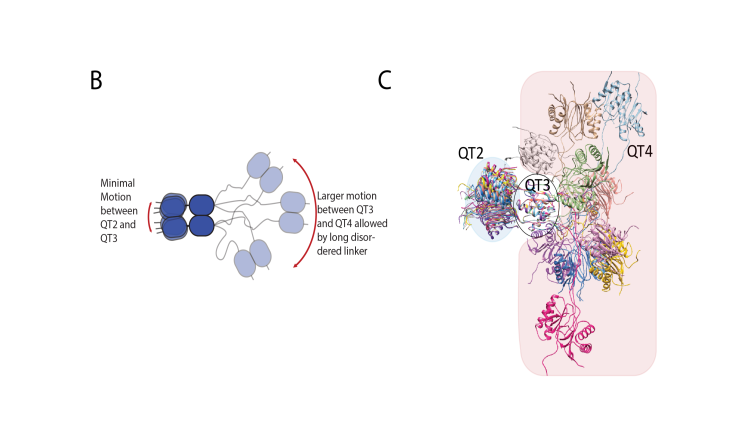The dynein light chain 8 (LC8) binds predominantly "in-register" to a multivalent intrinsically disordered partner.
The dynein light chain 8 (LC8) binds predominantly "in-register" to a multivalent intrinsically disordered partner.

Dynein light chain 8 (LC8) interacts with intrinsically disordered proteins (IDPs) and influences a wide range of biological processes. It is becoming apparent that among the numerous IDPs that interact with LC8, many contain multiple LC8-binding sites. Although it is established that LC8 forms parallel IDP duplexes with some partners, such as nucleoporin Nup159 and dynein intermediate chain, the molecular details of these interactions and LC8's interactions with other diverse partners remain largely uncharacterized. LC8 dimers could bind in either a paired "in-register" or a heterogeneous off-register manner to any of the available sites on a multivalent partner. Here, using NMR chemical shift perturbation, analytical ultracentrifugation, and native electrospray ionization MS, we show that LC8 forms a predominantly in-register complex when bound to an IDP domain of the multivalent regulatory protein ASCIZ. Using saturation transfer difference NMR, we demonstrate that at substoichiometric LC8 concentrations, the IDP domain preferentially binds to one of the three LC8 recognition motifs. Further, the differential dynamic behavior for the three sites and the size of the fully bound complex confirmed an in-register complex. Dynamics measurements also revealed that coupling between sites depends on the linker length separating these sites. These results identify linker length and motif specificity as drivers of in-register binding in the multivalent LC8-IDP complex assembly and the degree of compositional and conformational heterogeneity as a promising emerging mechanism for tuning of binding and regulation.